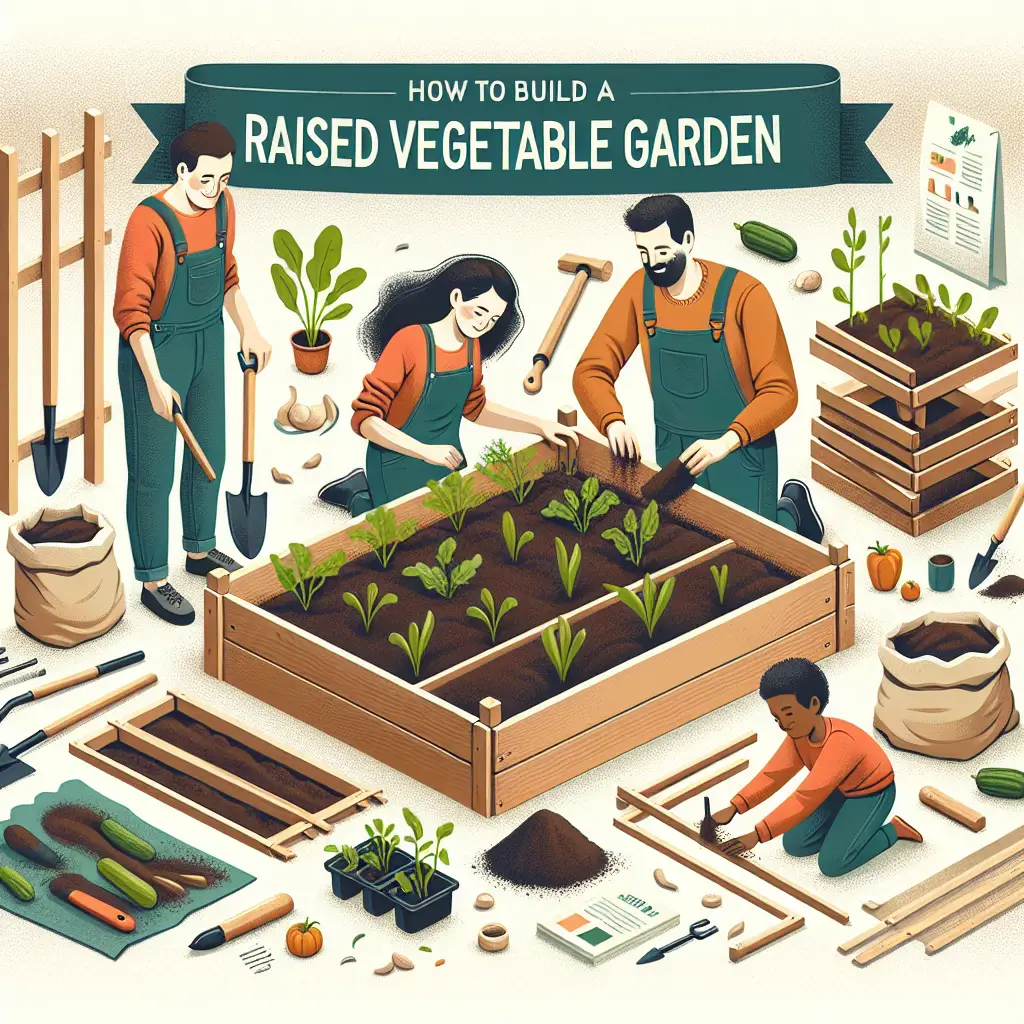Title: How To Build A Raised Vegetable Garden
Gardening is not only a rewarding hobby but also an excellent way to ensure a supply of fresh vegetables right from your backyard. Raised vegetable gardens can be a superb addition to your gardening ensemble, especially if you’re struggling with limited space or poor soil quality. In this guide, I’ll walk you through the steps to create a raised garden bed that’s perfect for growing an abundance of vegetables.
Understand The Benefits of Raised Vegetable Gardens
Raised garden beds offer numerous advantages. They provide better drainage, reduce soil compaction, and create an improved soil environment for your vegetables to flourish. These beds also help ward off some pests and make gardening easier on your back. According to a study by the University of California,“Raised bed gardens can yield about four times more than the same amount of space planted in rows.” This is particularly advantageous for those looking to maximize their yield.
Choose The Right Location
Location is key in gardening. Your raised bed should receive at least 6 to 8 hours of sunlight per day, so observe your yard to find a suitable spot. Moreover, consider proximity to your water source and ensure that you’re not placing the bed under trees where roots and shade could interfere with growth. The Old Farmer’s Almanac provides a tool for estimating the best planting times for your local area, which can help you plan the location and timing accurately.
Select Materials For Your Raised Beds
You have a range of material options for building your raised beds: wood, stone, bricks, or recycled composites. Cedar and redwood are rot-resistant woods that make for sturdy and long-lasting raised beds. Gardener’s Supply Company offers a variety of raised bed kits that can save you time on construction. Always ensure that the materials you choose are safe and do not leach harmful chemicals into the soil.
Design Your Raised Beds
The length of your raised bed can vary, but a width of 3 to 4 feet allows for easy access from both sides. A height of 6 to 12 inches is typical, but if you have mobility issues, you might prefer a taller bed. If you’re handy with tools, design your own, or find countless free designs online to fit your needs.
Construction Steps
Building a raised bed takes some elbow grease, but it’s well-worth the effort. Here’s a step-by-step guide:
- Measure and Cut – Measure your planks to the desired length and safely cut them to size, or have them cut at your local hardware store.
-
Assemble The Frame – Lay out your materials in the designated area. Use corner braces to secure the sides together to form a rectangular frame.
-
Prepare The Site – Remove any grass or weeds from the area where the bed will sit. It’s beneficial to lay down a layer of cardboard or landscape fabric to help prevent weeds from growing up into the bed.
-
Fill With Soil – Use a mix of topsoil, compost, and other organic material to fill your bed. A rich, fertile soil will encourage healthy plant growth and yield.
Maintain Your Garden
After construction, regular maintenance is key. Watering, weeding, and ensuring your vegetables have the necessary nutrients are all parts of a healthy garden routine. The National Gardening Association offers excellent advice on garden maintenance.
Tips and Tricks
- Practice crop rotation each season to minimize pests and diseases.
- Add a layer of mulch after planting to help retain soil moisture.
- If you’re in a particularly cold climate, consider adding a hoop house over your raised bed to extend the growing season.
Common Mistakes To Avoid
- Avoid using treated lumber, it can leach harmful substances into your soil and your food.
- Don’t forget to install a watering system. A simple drip irrigation setup can make watering much more manageable.
- Be wary of overcrowding plants, as this could lead to poor air circulation and disease.
Conclusion
Building a raised vegetable garden can enhance your gardening experience, give you better control over the soil and growing conditions, and ultimately yield a more abundant harvest. It’s a bit of a project, but with proper planning and some sweat equity, you’ll have a functional raised bed that can serve you for many seasons to come.
Remember to keep researching, learning, and experimenting with techniques. Gardening is an evolving activity that can offer immense satisfaction and bountiful results. Happy gardening!

